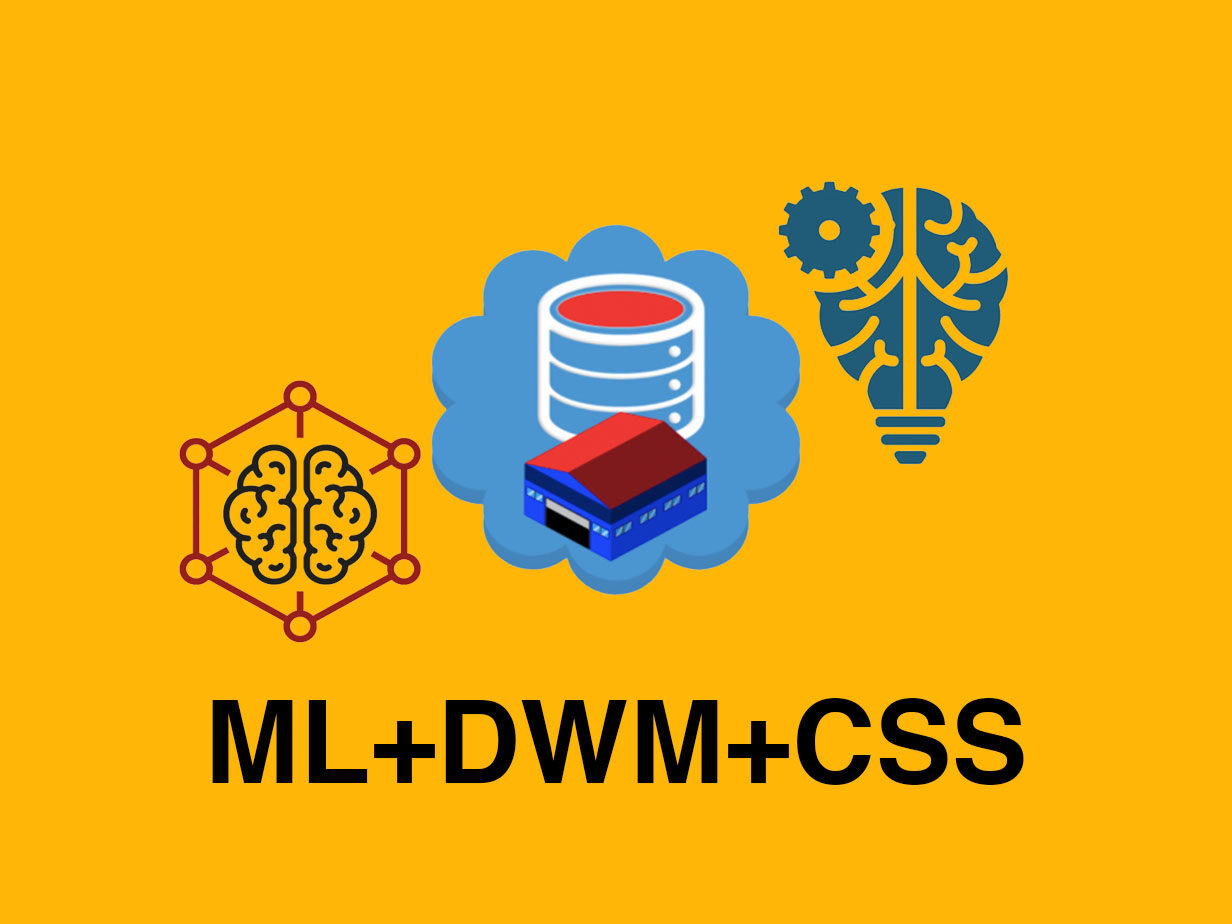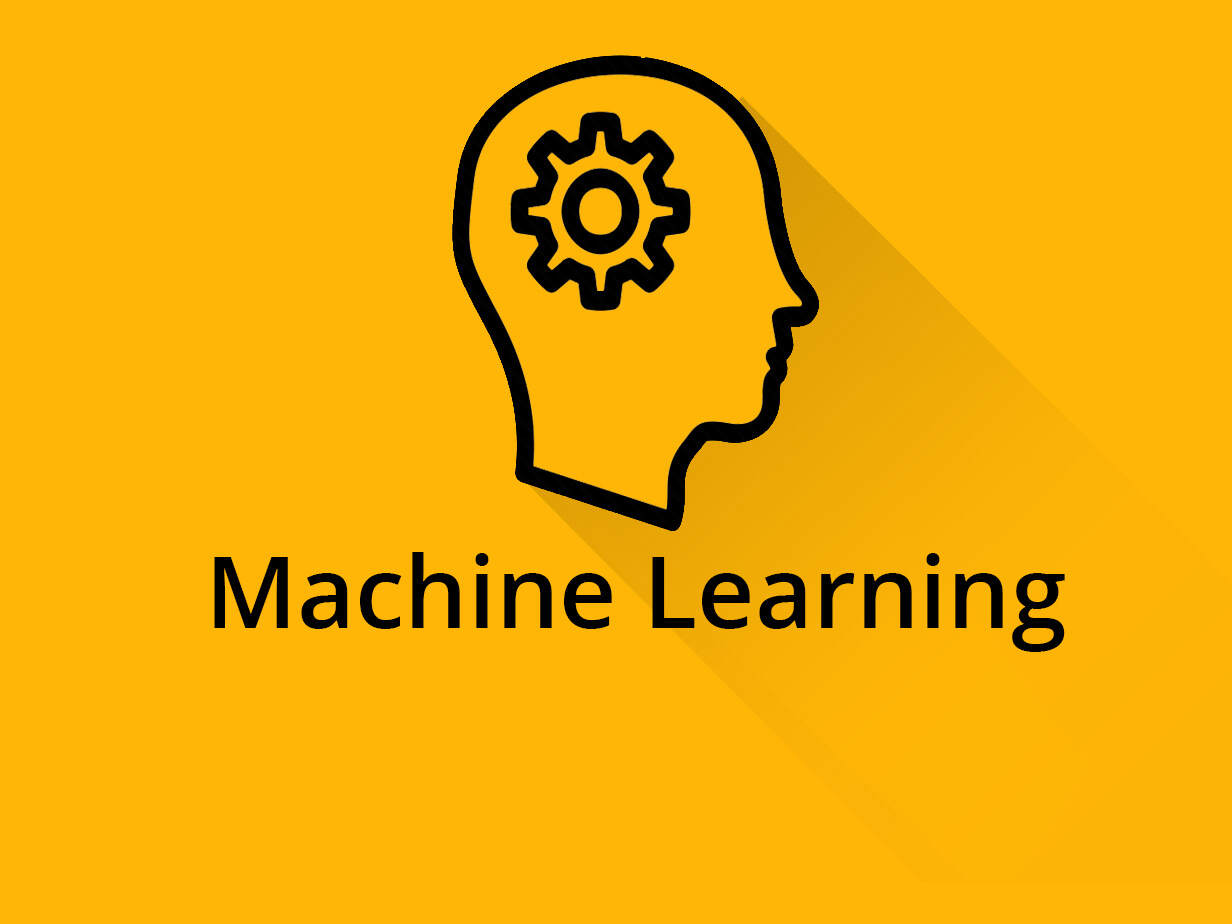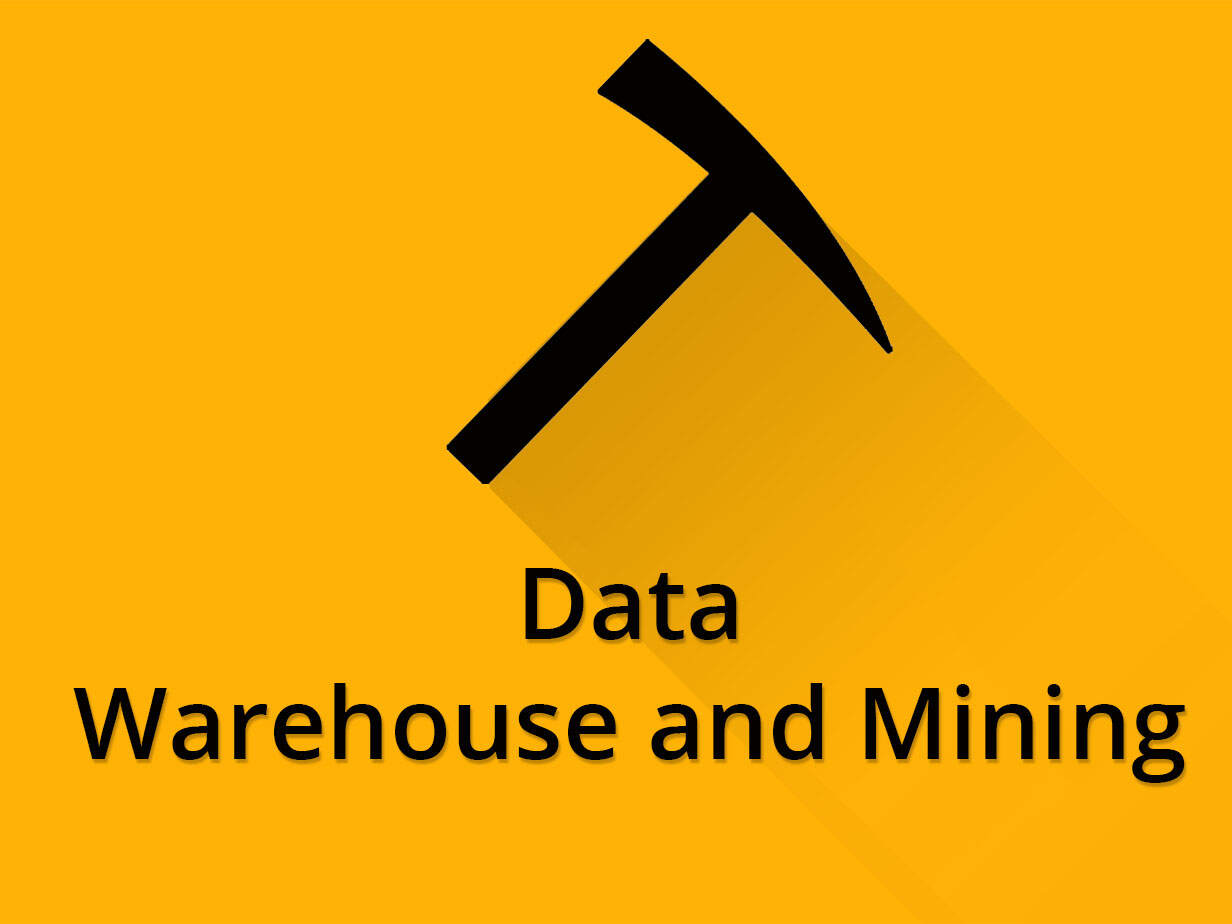ML+DWM+CSS Bundle
Machine Learning is semester 6 subject of final year of computer engineering in Mumbai University. Prerequisite for studying this subject are Data Structures, Basic Probability and Statistics, Algorithms.Module Introduction to Machine Learning consists of the following subtopics, Types of Machine Learning, Issues in Machine Learning, Application of Machine Learning, and Steps in developing a Machine Learning Application. Module Introduction to Neural Network Introduction consists of the following subtopics Fundamental concept Evolution of Neural Networks Biological Neuron, Artificial Neural Networks, NN architecture, Activation functions, McCulloch-Pitts Model. Machine learning (ML) is the study of computer algorithms that improve automatically through experience. It is seen as a part of artificial intelligence. Machine learning algorithms build a model based on sample data, known as “training data”, in order to make predictions or decisions without being explicitly programmed to do so. Machine learning algorithms are used in a wide variety of applications, such as email filtering and computer vision, where it is difficult or unfeasible to develop conventional algorithms to perform the needed tasks.
Data Warehousing and Mining is semester 6 subject of final year of computer engineering in Mumbai University. Prerequisite for studying this subject are Basic database concepts, Concepts of algorithm design and analysis.Module Introduction to Data Warehouse and Dimensional modelling contains the following topics Introduction to Strategic Information, Need for Strategic Information, Features of Data Warehouse, Data warehouses versus Data Marts, Top-down versus Bottom-up approach. Data warehouse architecture, metadata, E-R modelling versus Dimensional Modelling, Information Package Diagram, STAR schema, STAR schema keys, Snowflake Schema, Fact Constellation Schema, Factless Fact tables, Update to the dimension tables, Aggregate fact tables. Module ETL Process and OLAP contains the following topics Major steps in ETL process, Data extraction: Techniques, Data transformation: Basic tasks, Major transformation types, Data Loading: Applying Data, OLTP Vs OLAP, OLAP definition, Dimensional Analysis, Hypercubes, OLAP operations: Drill down, Roll up, Slice, Dice and Rotation, OLAP models : MOLAP, ROLAP. Module Introduction to Data Mining, Data Exploration and Preprocessing contains the following topics Data Mining Task Primitives, Architecture, Techniques, KDD process, Issues in Data Mining, Applications of Data Mining, Data Exploration Types of Attributes, Statistical Description of Data, Data Visualization, Data Preprocessing: Cleaning, Integration, Reduction: Attribute subset selection, Histograms, Clustering and Sampling, Data Transformation & Data Discretization: Normalization, Binning, Concept hierarchy generation, Concept Description Attribute oriented Induction for Data Characterization. Module Classification, Prediction and Clustering: Basic Concepts, Decision Tree using Information Gain, Induction: Attribute Selection Measures, Tree pruning, Bayesian Classification: Naive Bayes, Classifier Rule Based Classification: Using IFTHEN Rules for classification, Prediction: Simple linear regression, Multiple linear regression Model Evaluation & Selection: Accuracy and Error measures, Holdout, Random Sampling, Cross Validation, Bootstrap, Clustering: Distance Measures, Partitioning Methods (k-Means, k-Medoids), Hierarchical Methods(Agglomerative, Divisive). Module Mining Frequent Patterns and Association Rules contains the following topics Market Basket Analysis, Frequent Item sets, Closed Item sets, and Association Rule, Frequent Pattern Mining, Efficient and Scalable Frequent Item set Mining Methods: Apriori Algorithm, Association Rule Generation, Improving the Efficiency of Apriori, FP growth, Mining frequent Itemsets using Vertical Data Format, Introduction to Mining Multilevel Association Rules and Multidimensional Association Rules. Module Spatial and Web Mining contains the following topics Spatial Data, Spatial Vs. Classical Data Mining, Spatial Data Structures, Mining Spatial Association and Co-location Patterns, Spatial Clustering Techniques: CLARANS Extension, Web Mining: Web Content Mining, Web Structure Mining, Web Usage mining, Applications of Web Mining.
In computing, a data warehouse (DW or DWH), also known as an enterprise data warehouse (EDW), is a system used for reporting and data analysis, and is considered a core component of business intelligence. DWs are central repositories of integrated data from one or more disparate sources. They store current and historical data in one single place that are used for creating analytical reports for workers throughout the enterprise. The data stored in the warehouse is uploaded from the operational systems (such as marketing or sales). The data may pass through an operational data store and may require data cleansing for additional operations to ensure data quality before it is used in the DW for reporting.Cryptography and System Security is semester 6 subject of computer engineering in Mumbai University. Prerequisite for studying this subject are Computer Organization. Objectives of course Cryptography and System Security is to introduce classical encryption techniques and concepts of modular arithmetic and number theory.
To explore the working principles and utilities of various cryptographic algorithms including secret key cryptography, hashes and message digests, and public key algorithms. To explore the design issues and working principles of various authentication protocols, PKI standards and various secure communication standards including Kerberos, IPsec, and SSL/TLS and email. To develop the ability to use existing cryptographic utilities to build programs for secure communication. Outcomes of course Cryptography and System Security are that at the end of the course learner will able to. Understand system security goals and concepts, classical encryption techniques and acquire fundamental knowledge on the concepts of modular arithmetic and number theory. Understand, compare and apply different encryption and decryption techniques to solve problems related to confidentiality and authentication. Apply the knowledge of cryptographic checksums and evaluate the performance of different message digest algorithms for verifying the integrity of varying message sizes. Apply different digital signature algorithms to achieve authentication and design secure applications Understand network security basics, analyze different attacks on networks and evaluate the performance of firewalls and security protocols like SSL, IPSec, and PGP. Analyze and apply system security concept to recognize malicious code.
Prepare For Your Placements: https://lastmomenttuitions.com/courses/placement-preparation/
![]()
/ Youtube Channel: https://www.youtube.com/channel/UCGFNZxMqKLsqWERX_N2f08Q
Follow For Latest Updates, Study Tips & More Content!
Course Features
- Lectures 135
- Quiz 0
- Duration 34 weeks
- Skill level All levels
- Students 1
- Assessments Yes
Curriculum
- 18 Sections
- 135 Lessons
- 34 Weeks
- Introduction to Machine Learning4
- Learning with Regression and Trees - Machine Learning5
- Learning with Classification and clustering - Machine Learning13
- 4.1Bayesian Belief Network9 Minutes
- 4.2Bayes Theorem and Naive Bayes Classifier8 Minutes
- 4.3Markov Models
- 4.4Hidden Markov Model11 Minutes
- 4.5Support Vector Machine10 Minutes
- 4.6K mean Clustering Algorithm12 Minutes
- 4.7Apriori Algorithm with solved Example12 Minutes
- 4.8Agglomerative Algorithm with solved Example Part #113 Minutes
- 4.9Agglomerative Algorithm with solved Example Part #25 Minutes
- 4.10FP Tree Algorithm with Solved Example15 Minutes
- 4.11Hidden Markov model Basic Part 110 Minutes
- 4.12Hidden Markov model Basic Part 27 Minutes
- 4.13Hidden Markov model Basic Part 38 Minutes
- Dimensionality Reduction - Machine Learning5
- Introduction to Neural Network - Machine Learning13
- 6.1Introduction to ANN and structure of ANN6 Minutes
- 6.2Activation functions in ANN (Discrete and Continuous)4 Minutes
- 6.3Neural Network Architecture5 Minutes
- 6.4Linear Separability4 Minutes
- 6.5Mc-Culloch-Pitts Neural Model3 Minutes
- 6.6Hebbs Network/Hebbian Learning (with solved example)17 Minutes
- 6.7Winners-Takes-All5 Minutes
- 6.8Self Organizing Maps and KSOMs10 Minutes
- 6.9Linear Vector Quantization (LVQs)5 Minutes
- 6.10Derivation of Unipolar Continuous Function.7 Minutes
- 6.11Derivation of Bipolar Continuous Function11 Minutes
- 6.12Perceptron Learning (with solved example)11 Minutes
- 6.13Backpropagation Network (with solved example)19 Minutes
- Introduction to Optimization Techniques - Machine Learning7
- Machine Learning - Notes8
- Data Warehouse and Data Mining INDEX29
- 9.1Introduction to Data Warehouse11 Minutes
- 9.2Meta Data5 Minutes
- 9.3Data Mart6 Minutes
- 9.4Architecture of data warehouse7 Minutes
- 9.5How to draw star schema10 Minutes
- 9.6Olap operation8 Minutes
- 9.7OLAP VS OLTP8 Minutes
- 9.8K Mean8 Minutes
- 9.9Introduction to data mining10 Minutes
- 9.10Naive Bayes 1
- 9.11Apriori algorithm12 Minutes
- 9.12Agglomerative clustering13 Minutes
- 9.13KDD9 Minutes
- 9.14ETL9 Minutes
- 9.15FP Tree15 Minutes
- 9.16Decision Tree
- 9.17K Medoid21 Minutes
- 9.18Naive Bayes 225 Minutes
- 9.19Agglomerative Adjacency Matrix5 Minutes
- 9.20DBSCAN4 Minutes
- 9.21Design Strategy of Data warehouse and Data Mining12 Minutes
- 9.22Types of Attribute for Data Exploration9 Minutes
- 9.23K mean clustering Sum – Type 2 where K=223 Minutes
- 9.24Data Pre-processing Part 117 Minutes
- 9.25Data Pre-processing Part 29 Minutes
- 9.26Data Visualization Part 111 Minutes
- 9.27Data Visualization Part 2
- 9.28Schema Design – Dimension Modeling Part 116 Minutes
- 9.29Schema Design – Dimension Modeling Part 211 Minutes
- Data Warehouse and Data Mining - Notes1
- Introduction - Cryptography and System Security7
- Symmetric and Asymmetric key Cryptography and key Management - Cryptography and System Security9
- 12.1Stream and Block Cipher4 Minutes
- 12.2DES Algorithm Full Working12 Minutes
- 12.3DES key Generation Explain Step by Step11 Minutes
- 12.4AES Algorithm Full working26 Minutes
- 12.5Modes of Operation8 Minutes
- 12.6Public Key cryptogrpahy3 Minutes
- 12.7RSA Algorithm with Solved Example14 Minutes
- 12.8Diffie Hellman7 Minutes
- 12.9How to find modulus of Exponential Number (high power value )12 Minutes
- Hashes, Message Digests and Digital Certificates - Cryptography and System Security4
- Authentication Protocols & Digital signature schemes - Cryptography and System Security2
- Network Security and Applications - Cryptography and System Security6
- System Security - Cryptography and System Security4
- Extra - Cryptography and System Security8
- 17.1IDEA Algorithm Full Working14 Minutes
- 17.2Blowfish Algorithm Full working13 Minutes
- 17.3Confusion and Diffusion2 Minutes
- 17.4Meet in the Middle3 Minutes
- 17.5Phishing Attack11 Minutes
- 17.6Session Hijacking and Spoofing Attack11 Minutes
- 17.7OS Security Memory and Address Protection11 Minutes
- 17.8E commerce Security and Payment gateway9 Minutes
- Cryptography and System Security - Notes9
- 18.1Index
- 18.2Module 1 ( Introduction to Cryptography )
- 18.3Module 2 ( Basics of Cryptography )
- 18.4Module 3 ( Secret Key Cryptography )
- 18.5Module 4 ( Public Key Cryptography )
- 18.6Module 5 ( Cryptographic Hash Function )
- 18.7Module 6 ( Authentication Application )
- 18.8Module 7 ( Security and Firewalls)
- 18.9Module 8 ( IP Security )
- Software Engineering Full Notes1





